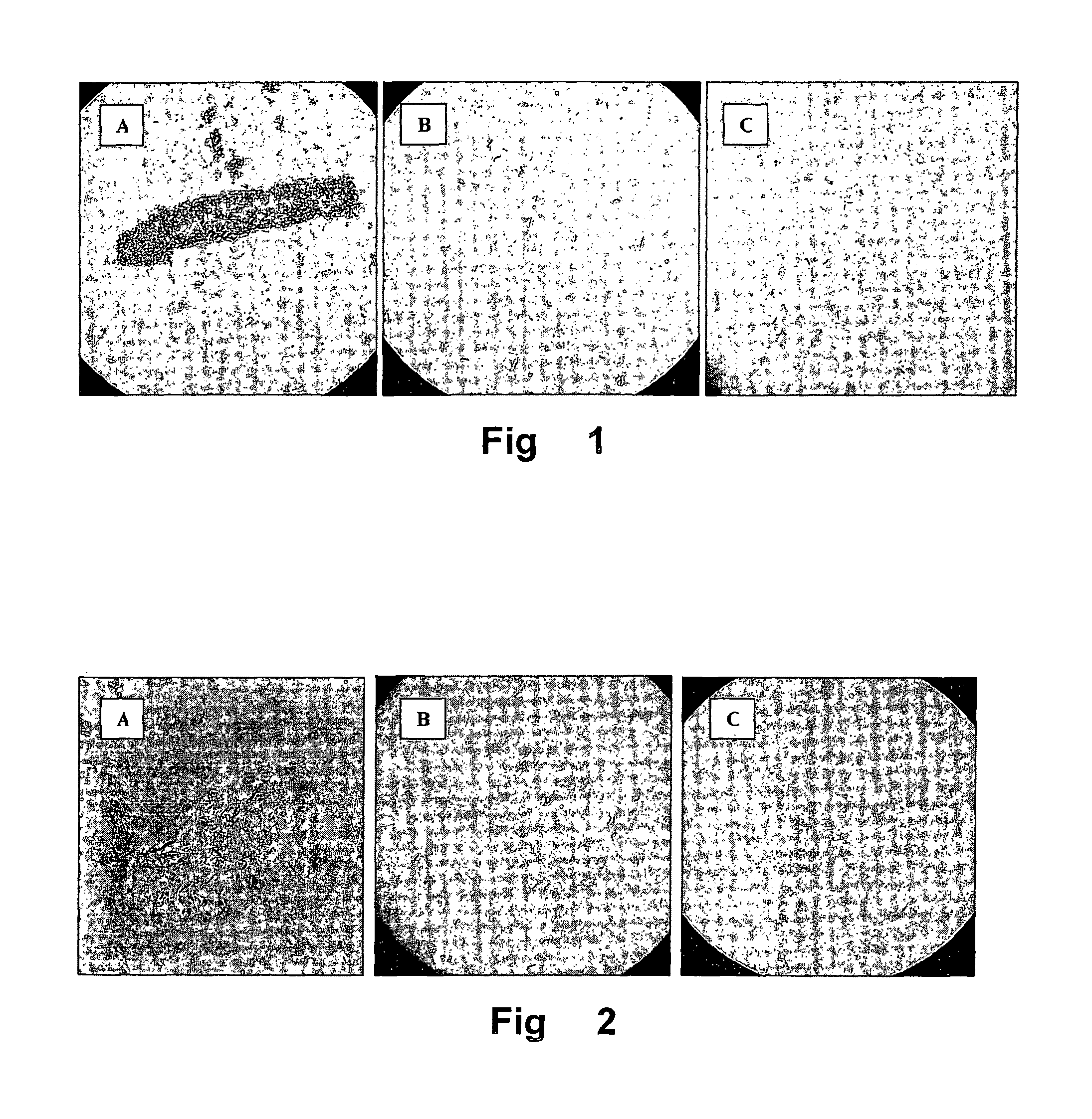Lactobacillus strains and uses thereof
a technology of lactobacillus and lactobacillus, applied in the field of new lactobacillus strains, can solve the problem of insufficient elimination of the immune respons
- Summary
- Abstract
- Description
- Claims
- Application Information
AI Technical Summary
Benefits of technology
Problems solved by technology
Method used
Image
Examples
example 1
Storage of Used Strains
[0030]The storage of the Lactobacillus strains took place in a frozen state. 1 ml of a culture cultivated to a stationary phase (OD600 / ml 4-8) in MRS medium (55 g / l, pH 6.5; Difco, USA) was mixed with 500 μl of a 50% by volume sterile glycerin solution, and the mixture was deep-frozen to −80° C.
[0031]The storage of Helicobacter pylori took place in a frozen state. 1 ml of a culture cultivated to a stationary phase in Brucella broth (28 g / l, pH 7.0; BD, USA), supplemented with 5% by volume defillibrated horse blood (Oxoid) was mixed with 500 μl of a 50% by volume sterile glycerin solution, and the mixture was deep-frozen to −80° C. The horse blood was frozen before use and decomposed at 20° C., in order to destroy blood cells.
example 2
Aggregation of Helicobacter pylori by Lactobacillus Strains According to the Invention
[0032]The cultivation of the Lactobacilli took place in closed Falcon tubes in MRS medium at 37° C. for 24-48 h.
[0033]Helicobacter pylori was cultivated for 5 to 6 days in an Erlenmeyer flask under microaerophilic conditions and otherwise as described in Example 1.
[0034]After the cultivation, the cell morphology was investigated by microscope. Assays were made with cultures consisting of cells with a sigmoidal morphology as well as of cells with coccoidal morphology. Cultures with mixed morphology were also investigated.
[0035]The respective cells were harvested by centrifugation at 3,200 g for 10 min, and the supernatant was removed. The cells were washed once in 5 ml buffer and resuspended in 5 ml buffer (PBS buffer containing 1.5 g / l Na2HP04*2H20, 0.2 g / l KH2P04 and 8.8 g / l NaCl). The pH value was adjusted with HCl to 7.0. The OD600 value was measured and adjusted to 2 by addition of buffer.
[0036...
example 3
Simulation of the Conditions of the Stomach Tract
[0040]For the simulation of the in vivo conditions, the experiments of Example 2 were repeated, the resuspension of the Lactobacillus cells took place in simulated stomach juice (5 g / l NaCl and 3 g / l pepsin (Sigma)). The pH was adjusted with HCl to 2. This incubation was performed for 30 min at 37° C. Since Helicobacter pylori can increase the pH value in the immediate neighborhood of the cells to pH 4, the cells were harvested, as described in Example 2, and then resuspended in acetate buffer pH 4. For adjustment of the buffer, 41 ml of a solution with 0.1 mole / l acetic acid with a solution with 0.2 Mol / l sodium acetate were adjusted to pH 4. Water was then used to fill up to a final volume of 100 ml.
[0041]The Helicobacter pylori cells were cultivated according to Example 2.
[0042]After harvesting the cells according to Example 2, the cells were, different from Example 2, resuspended in an acetate buffer (see above). Thereafter, the a...
PUM
| Property | Measurement | Unit |
|---|---|---|
| size | aaaaa | aaaaa |
| time | aaaaa | aaaaa |
| volume | aaaaa | aaaaa |
Abstract
Description
Claims
Application Information
 Login to View More
Login to View More - R&D
- Intellectual Property
- Life Sciences
- Materials
- Tech Scout
- Unparalleled Data Quality
- Higher Quality Content
- 60% Fewer Hallucinations
Browse by: Latest US Patents, China's latest patents, Technical Efficacy Thesaurus, Application Domain, Technology Topic, Popular Technical Reports.
© 2025 PatSnap. All rights reserved.Legal|Privacy policy|Modern Slavery Act Transparency Statement|Sitemap|About US| Contact US: help@patsnap.com

